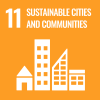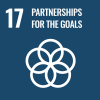IOM Launches Labour Migration Process Mapping Guide for Business to Mitigate Risks to Migrant Workers in Global Supply Chains
Ho Chi Minh City, 16 May 2023 - The International Organization for Migration (IOM) today launched the Labour Migration Process Mapping Guide to help business enterprises identify, mitigate, and address human and labour rights risks faced by migrant workers in global supply chains. The Guide provides step-by-step instructions on how to retrace the steps that migrant workers take from their communities of origin to their workplaces in destinations, and determine the effectiveness of existing recruitment management systems to prevent and address forced labour risks.
While migrant workers make valuable contributions to sustainable development in both countries of origin and destination, they can be more vulnerable to exploitation as a result of gaps in labour migration governance systems, as well as unethical recruitment and employment practices. The latest global estimates on modern slavery indicate that migrant workers represent almost a quarter of the 28 million victims of forced labour globally.
“All businesses have a responsibility to respect the human and labour rights of migrant workers throughout their operations and value chains,” said the Head of IOM’s Labour Migration and Social Inclusion Division, Elizabeth Warn.
“The Labour Migration Process Mapping Guide is a practical tool that businesses can use to increase transparency, strengthen due diligence, build stronger relationships with their business partners and stakeholders, and enhance ethical recruitment and migrant worker protection,” Warn added.
The Guide helps business enterprises understand the specific risks facing migrant workers during their recruitment and deployment, employment, and return home or onward migration. It also enables them to recognize and respond to any systemic issues within their operations and supply chains that make migrant workers more vulnerable to exploitation.
Three supporting tools, which include effective interview techniques and key considerations to ensure migrant worker safety and well-being, are also included in the Guide.
Designed primarily for business enterprises with complex international supply chains where migrant workers are present, the Guide builds on the United Nations Guiding Principles on Business and Human Rights (UNGP) and relevant international human rights, labour standards and frameworks on responsible business conduct.
Notably, the Guide was a collaborative effort developed in consultation with governments, civil society, migrant workers and the private sector, as well as by the collection of good practices by employers, multinational enterprises and labour recruiters.
“Respecting human rights and the labour rights of migrant workers is paramount”, said Yukihiro Nitta, the Group Senior Vice President, Fast Retailing. “The Labour Migration Process Mapping Guide is the result of an extensive multi-stakeholder consultation process. So it is clear, user-friendly, and serves the needs of business enterprises. We welcome this tool as a way to help better protect the rights of migrant workers in our supply chains.”
The Labour Migration Process Mapping Guide and tools are available for download on the IOM website HERE.
For more information, please contact Anastasia Vynnychenko (avynnychenko@iom.int).
For media queries, please contact Yen Nguyen (thihnguyen@iom.int).
























